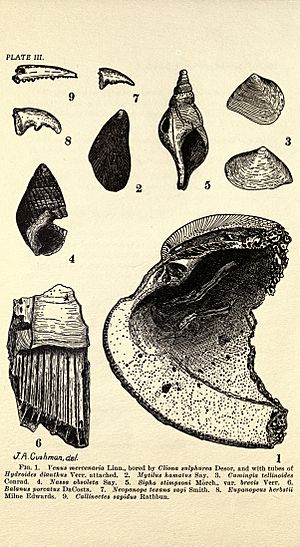Joseph Augustine Cushman facts for kids
Joseph Augustine Cushman (born January 31, 1881 – died April 16, 1949) was an American scientist. He was a geologist, who studies Earth's rocks and history. He was also a paleontologist, who studies ancient life through fossils. Most importantly, he was a leading expert on tiny sea creatures called foraminifera.
Early Life and Education
Joseph Cushman was born in Bridgewater, Massachusetts, in 1881. He was a good student and also enjoyed sports. He played baseball and football in school.
He later went to Harvard University. There, he earned his first degree in 1903. He continued his studies and received his Ph.D. (a high-level university degree) from Harvard in 1909.
Career and Research
After his studies, Joseph Cushman worked at the Boston Natural History Museum. He started part-time while still studying. By 1913, he became the director of the museum.
In 1923, he built his own special laboratory near his home in Sharon, Massachusetts. This was called the Cushman Laboratory for Foraminiferal Research. Here, he became a top expert on foraminifera. These are tiny, single-celled organisms that live in the ocean. They often have shells.
Cushman worked as a consultant for oil companies. He also taught classes on micropaleontology, which is the study of microscopic fossils. He did a lot of research in his lab. Many people helped him, including his family and scientists from other countries. Over his career, he wrote more than 500 scientific papers.
Legacy
Joseph Cushman passed away on April 16, 1949. His important work was continued by his assistant, M. Ruth Todd. He is also known as a founder of the Kappa Delta Phi National Fraternity.
Awards and Honors
- The Joseph A. Cushman award is given to people who achieve great things in foraminiferal research.
- A wrinkle ridge on the Moon is named after him. It is called Dorsum Cushman.


